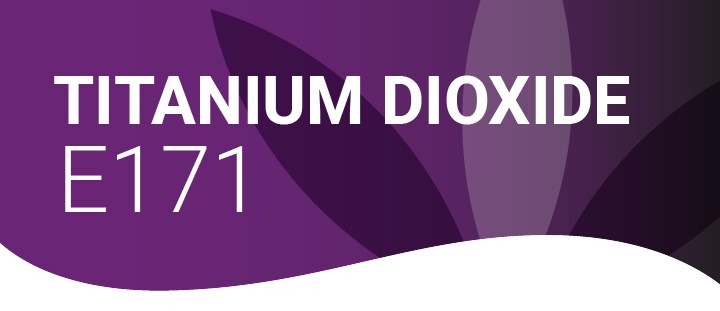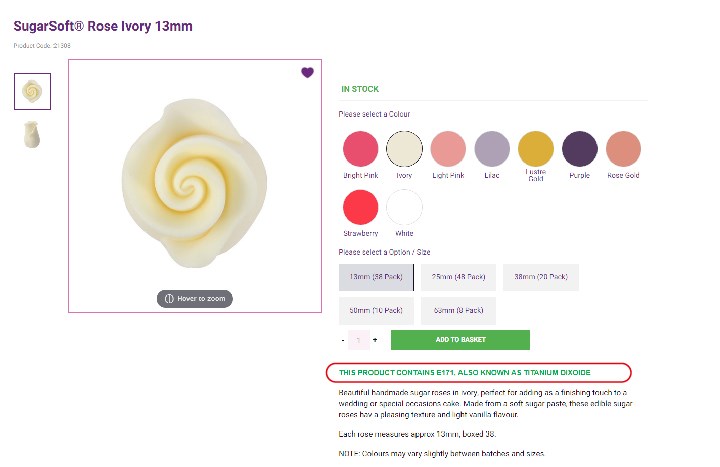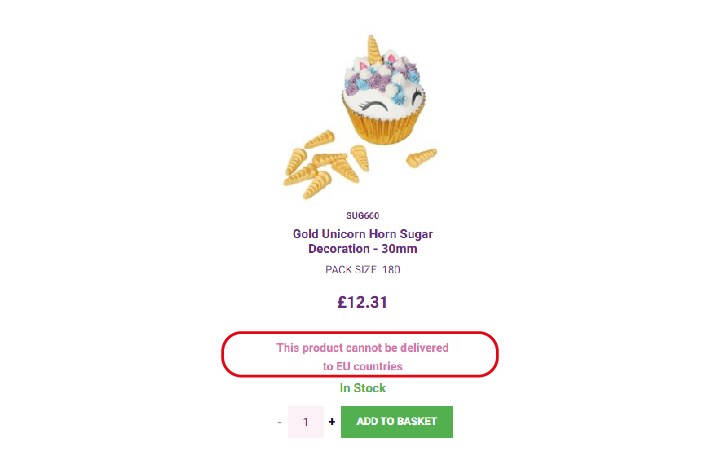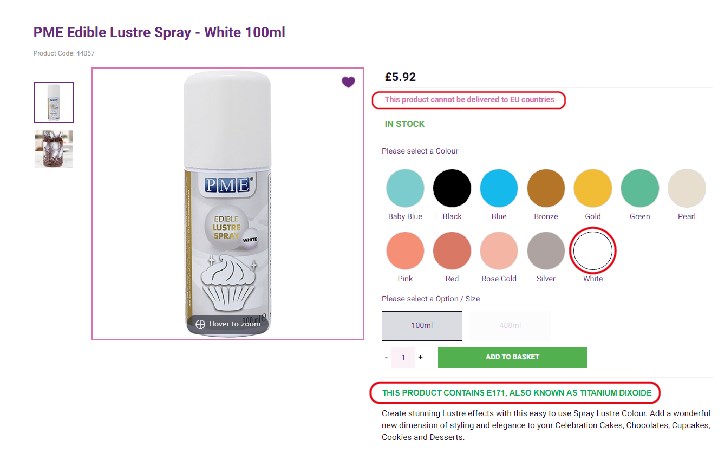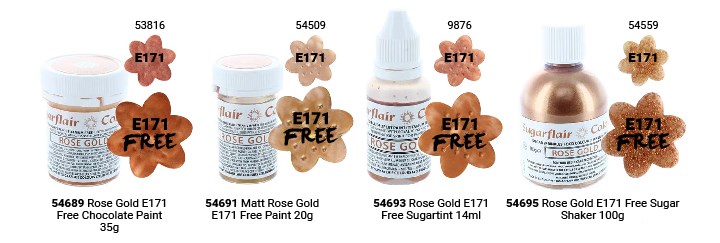-
Product
Equipment
- Cutters
- Moulds and Veiners
- Sugarcraft Tools
- Piping Nozzles
- Piping Bags
- Baking Tools
- Rolling Pins
- Stencils
- Texture Mats
- Rounds and Square Baking Tins
- Shaped Baking Tins
- Number Baking Tins
- Muffin Tins
- Turntables
- Cake Dummies
- Dowels, Pillars, Separators
- Smoothers and Scrapers
- Brushes
- Knives
- Airbrushes & Electronic Equipment
- Wires, Stamen and Tape
- Modelling Tools
- Cake Stands
- Ribbons - Plain
- Ribbons - Fancy
- Frills & Banding
- Brand
-
Occasion
Celebration
- Birthday Highlights 2023
- Wedding Highlights 2023
- Occasions Highlights 2023
- Birthday Candles - Numbers
- Birthday Candles - Shaped
- Birthday Candles - Plain & Spiral
- Birthday Toppers
- Birthday Edible Decorations
- Wedding Flowers
- Wedding Cake Lace
- Wedding Toppers
- Wedding Cake Display
- Anniversary
- Baby Shower
- Christening
- Communion
- Valentines
- Mother's Day
- Father's Day
- Other Celebrations
- Food Service
- PhotoCake
- Sale
What is titanium dioxide?
Titanium dioxide (TiO2), or E171, is an additive very commonly used to brighten or whiten the colour and appearance of food. It has widespread use in cake decorating supplies, with either description being listed on the ingredient declaration.Is titanium dioxide banned?
The additive has been considered safe to consume for a long time, however concern emerged in recent years following European Food Safety Association (ESFA) investigation. Subsequently, a ban on the addition of titanium dioxide (E171) in manufacturing is in force in the EU, but not in Great Britain.
New European regulations have been published, (EU) 2022/63 of 14 January 2022. This entered into force on 7 February 2022 and is directly applicable in all Member States including Northern Ireland, but to reiterate, does not include Great Britain. It removes the authorisation to use titanium dioxide (E171) in foods/ingredients and removes the use of potassium aluminium silicate (E555) as a carrier (effectively banning lustre colours).
So, EU manufacturers can no longer add titanium dioxide (E171) to their products for sale into the EU and in many cases, they have discontinued these lines completely, replacing them with ‘E171 Free’ versions.
Transitional measures allowed products containing titanium dioxide (E171) to continue to be placed on the market until 7th August 2022 for all customers - including EU customers. These can, and will remain on the market, available for sale until their date of minimum durability i.e., sell through to expiry date. In other words, you WILL still find items which DO contain the additive for sale on our website. EU cake makers can still use products containing titanium dioxide (E171) if they wish, provided the product was manufactured before 7th August.
We have taken measures to clearly identify titanium dioxide (E171) in the product description information, and we remain permitted to continue to sell these in accordance with these measures. Since we are no longer based in the EU, importers are responsible for compliance in their territory.
We strongly encourage all customers to understand the regulations for their own country and apply caution when ordering products to avoid customs issues.
We have made every endeavour to place restrictions on selling any products containing titanium dioxide (E171) manufactured after 7 August 2022 to EU customers at the website checkout. These will not be available to our EU customers.
Can I still use products containing titanium dioxide in the UK?
Yes. Titanium dioxide (E171) is NOT currently banned for use in the UK. It remains a permitted food additive in Great Britain under retained Regulation (EC) No 1333/2008. The Food Standards Agency (FSA) raised questions around the EFSA findings and will conduct its own risk assessment. To do this, the FSA is working with other Government departments and the Scientific Advisory Committee to coordinate a UK independent review of titanium dioxide as a food additive. No timeline has been given to complete this review but is likely to be later this year or early 2023.
Until conclusive guidelines are issued, to provide choice to all our customers, we will continue to sell both items containing E171 but also ‘E171 Free’ options, where they are available. Some manufacturers are already beginning to exclude the additive as standard, in anticipation of a potential ban being implemented in the UK too.
In the UK, it remains your choice as to whether you use products including titanium dioxide (E171).



